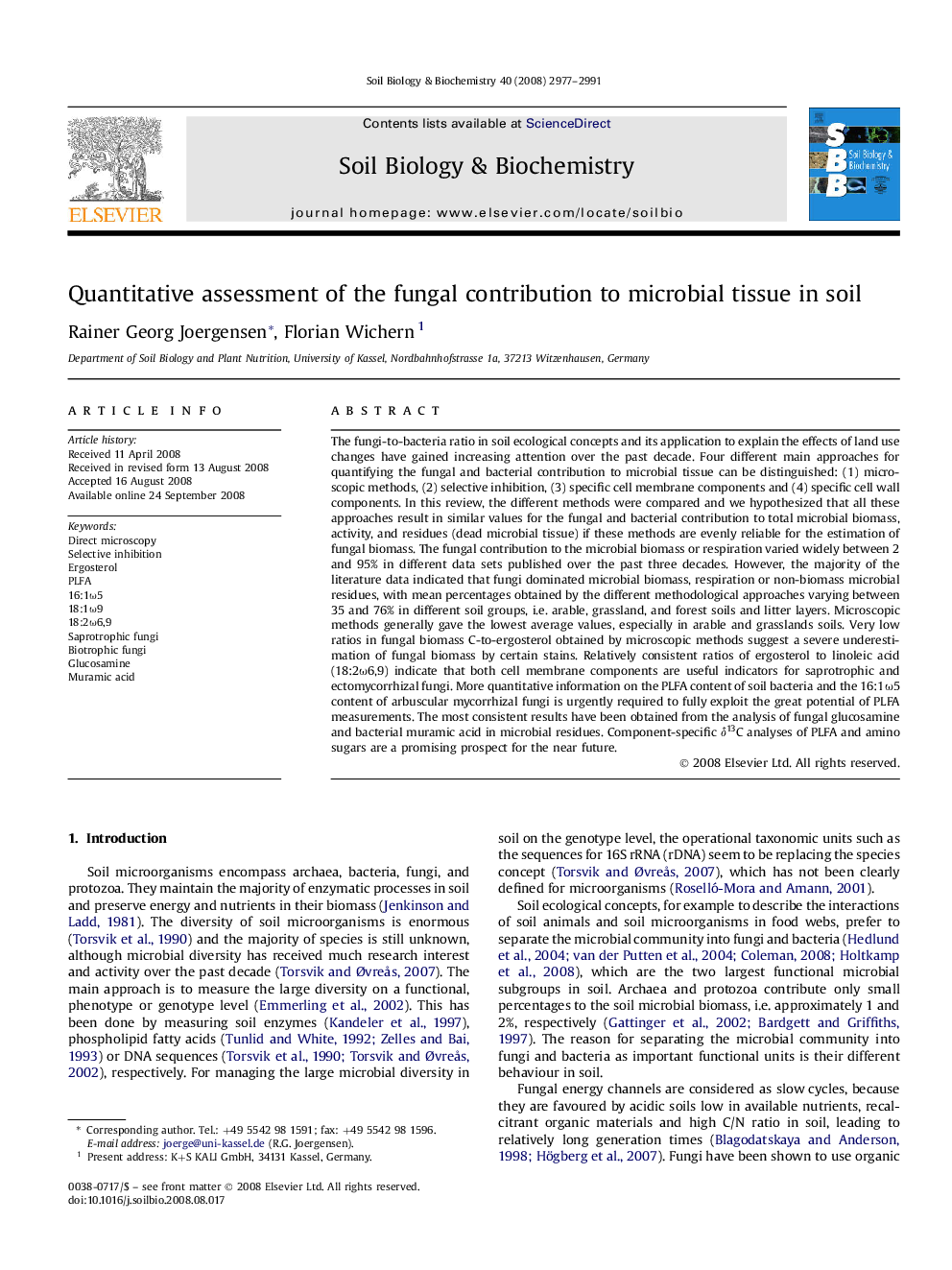| کد مقاله | کد نشریه | سال انتشار | مقاله انگلیسی | نسخه تمام متن |
|---|---|---|---|---|
| 2026297 | 1542640 | 2008 | 15 صفحه PDF | دانلود رایگان |
عنوان انگلیسی مقاله ISI
Quantitative assessment of the fungal contribution to microbial tissue in soil
دانلود مقاله + سفارش ترجمه
دانلود مقاله ISI انگلیسی
رایگان برای ایرانیان
کلمات کلیدی
موضوعات مرتبط
علوم زیستی و بیوفناوری
علوم کشاورزی و بیولوژیک
دانش خاک شناسی
پیش نمایش صفحه اول مقاله

چکیده انگلیسی
The fungi-to-bacteria ratio in soil ecological concepts and its application to explain the effects of land use changes have gained increasing attention over the past decade. Four different main approaches for quantifying the fungal and bacterial contribution to microbial tissue can be distinguished: (1) microscopic methods, (2) selective inhibition, (3) specific cell membrane components and (4) specific cell wall components. In this review, the different methods were compared and we hypothesized that all these approaches result in similar values for the fungal and bacterial contribution to total microbial biomass, activity, and residues (dead microbial tissue) if these methods are evenly reliable for the estimation of fungal biomass. The fungal contribution to the microbial biomass or respiration varied widely between 2 and 95% in different data sets published over the past three decades. However, the majority of the literature data indicated that fungi dominated microbial biomass, respiration or non-biomass microbial residues, with mean percentages obtained by the different methodological approaches varying between 35 and 76% in different soil groups, i.e. arable, grassland, and forest soils and litter layers. Microscopic methods generally gave the lowest average values, especially in arable and grasslands soils. Very low ratios in fungal biomass C-to-ergosterol obtained by microscopic methods suggest a severe underestimation of fungal biomass by certain stains. Relatively consistent ratios of ergosterol to linoleic acid (18:2Ï6,9) indicate that both cell membrane components are useful indicators for saprotrophic and ectomycorrhizal fungi. More quantitative information on the PLFA content of soil bacteria and the 16:1Ï5 content of arbuscular mycorrhizal fungi is urgently required to fully exploit the great potential of PLFA measurements. The most consistent results have been obtained from the analysis of fungal glucosamine and bacterial muramic acid in microbial residues. Component-specific δ13C analyses of PLFA and amino sugars are a promising prospect for the near future.
ناشر
Database: Elsevier - ScienceDirect (ساینس دایرکت)
Journal: Soil Biology and Biochemistry - Volume 40, Issue 12, December 2008, Pages 2977-2991
Journal: Soil Biology and Biochemistry - Volume 40, Issue 12, December 2008, Pages 2977-2991
نویسندگان
Rainer Georg Joergensen, Florian Wichern,